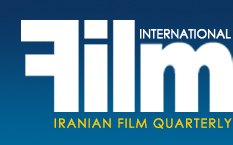|
56th International Short Film Festival Oberhausen (April 29 – May 4, 2010)
Short Films Are Not Stepchild of Features
by Hassan Dezvareh
|
German people had to deal with an expected derogation in 1954 when the fifth World Cup competitions were held. The German soccer team played against the more powerful Hungarian squad and was thrashed 8-3. The next faceoff between the two teams took place in the final leg of the World Cup in Bern, Switzerland, where the Germans beat their opponents 3-2. This is known in Germany as “the miracle of Bern” because it redeemed the hurt pride of the German people.
Das Wander von Bern was the name of a film made in 2003 by Soenke Wortmann which was watched by six million people. It was one of the bestselling movies in the whole history of the German cinema. Concurrently, something else was going on in the small, industrialized city of Oberhausen in Nordrhein-Westfallen province which was not witnessed by millions, but by a small group of people interested in short films. About 56 years later, however, The Miracle of Bern is history while that festival has turned into one of the most important cultural events in Germany. It is also known to film buffs in Iran. Just seven years after its inauguration, that is, in 1961, A Fire (Ebrahim Golestan) won the jury’s prizes and the jury of Volkshochschule section suggested it to be taught as a subject in those schools. Forough Farrokhzad’s The House Is Bleak also won the best documentary prize as well as the second prize in Volkshochschule section in 1964. In 1976, Catholic judges of the festival, proposed the officials to buy The Cloud and the Man (Parviz Naderi) for educational purposes. The next prize to be given to Iranian short film was won by Noureddin Zarrinkelk in 1977 for The Mad, Mad, Mad World, which won the cash prize of Volkshochschule section. Festival officials offered to buy Earthen Bread (Farideh Shafe’ei) in 1981 and Freedom American Style (Parviz Kalantari) won a commendation plaque from Spezialpreis des ArbeitskreisDritte Welt section; the young viewer’s workgroup also gave it the highest rank. The “Environment (Umweltpreis)” cash prize was given to The Lambs Are Born in Snow (Farhad Mehranfar) in 1990s. Finally, the last honor won by an Iranian film was in 2001 when jury of the international section gave its commendation to Convict (Mehdi Boustani). Unfortunately, thenceforth, Iranian films have been seldom admitted to the festival and it was the same this year.
The festival’s original name in 1954 was “West Germany Cultural Film Festival” or “Westdeutsche Kulturfilmtage.” Five years later, it was called West Germany Short Film Festival or Westdeutsche Kurzfilmtage. Its final name, International Short Film Festival Oberhausen or Internationale Kurzfilmtage Oberhausen was given to it in 1991. This is the oldest festival of short films in the world and has hosted such famous figures as Werner Herzog, George Lucas, Wim Wenders, Martin Scorsese, and Roman Polanski. Since its inception, six people have been in charge. Its current director is Dr. Lars Henrik Gass who has studied literature, theater, and philosophy and whose doctoral thesis was about Marguerite Duras.
A total of 5,418 films from 86 countries were present in the festival’s competition. Out of that figure, 64 films from 36 countries took part in the international competition, 28 films in the national competition, seven films in state section, 12 films in musical video competition and 37 films from 17 countries in Children’s and Youth Competition. Films in Children’s and Youth Competition, a section introduced 33 years ago, provide important educational material for visual training of children and young adults in Nordrhein-Westphalia province. German, British and Scandinavian were major entries in the section as most of their films were about children and young adults. Films screened in this section are classified for 3-, 6-, 8-, 10-, 12-, and 14-year-old age groups and every age group watches movies in its own category. Juries are also children and young adults and no adult person interferes with their judgments. The first and second morning showtimes were special to this section’s films during which children come from various schools according to an accurate schedule to watch the movies cost free along with their teachers. This section is held so important that, for instance, the state’s main newspaper called NRZ (Neue Ruhr / Neue Rhein Zeitung), published a special issue on this section.
[Page: 96]
|
|
|
|
|
President & Publisher
Massoud Mehrabi
Editors:
Sohrab Soori
Translators:
Sohrab Soori
Behrouz Tourani
Zohreh Khatibi
Contributors
Saeed Ghotbizadeh
Mehrzad Danesh
Advertisements
Mohammad Mohammadian
Art Director
Babak Kassiri
Ad Designers
Amir Kheirandish
Hossein Kheirandish
Cover Design
Alireza Amakchi
Correspondents
E.Emrani & M. Behraznia (Germany)
Mohammad Haghighat (France)
A. Movahed & M. Amini (Italy)
Robert Richter (Switzerland)
F. Shafaghi (Canada)
B. Pakzad (UAE)
H. Rasti (Japan)
Print Supervisors
Shad-Rang
Noghreh-Abi
Gol-Naghsh
Subscription & Advertising Sales
Address: 10, Sam St., Hafez Ave., TEHRAN, IRAN
Phone: +98 21 66722444
Fax: +98 21 66718871
info@film-magazine.com
Copyright: Film International
© All rights reserved,
2023, Film International
Quarterly Magazine (ISSN 1021-6510)
Editorial Office: 5th Floor, No. 10
Sam St., Hafez Ave., Tehran 11389, Iran
Printed in Tehran
Publishing Date Winter 2011
*
All articles represent views of their
authors and not necessarily
those of the editors
|
|
|

